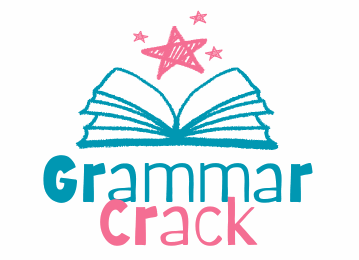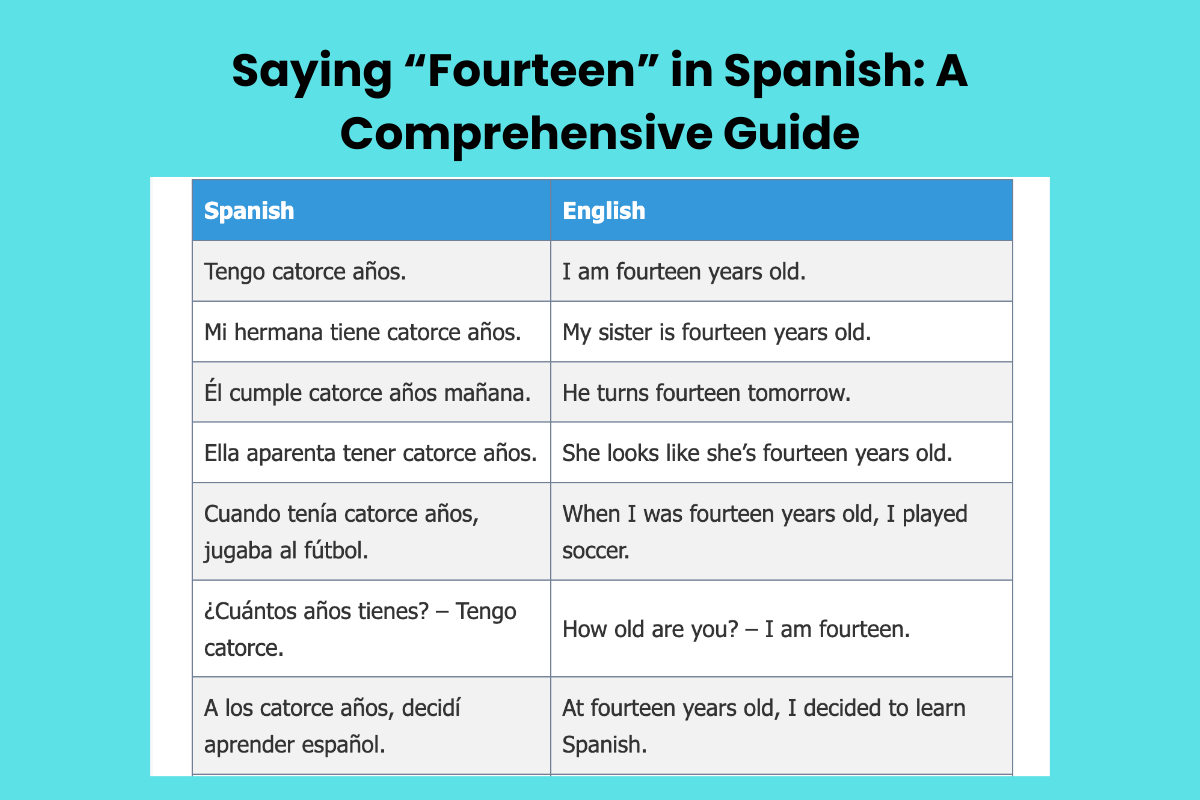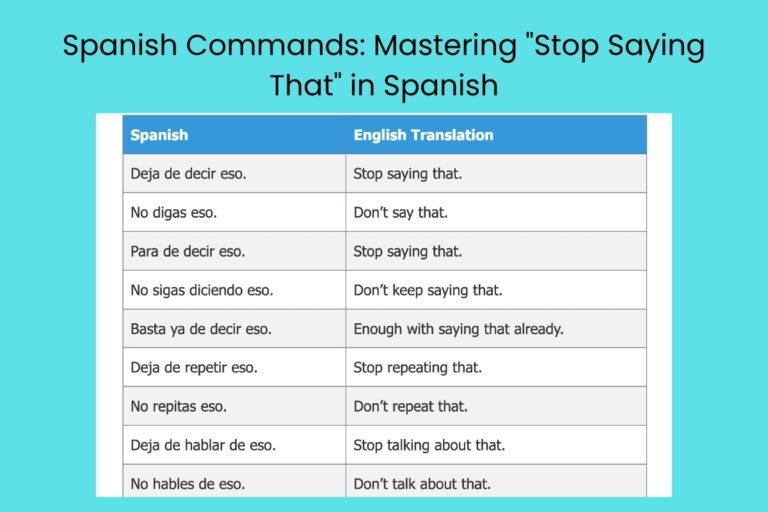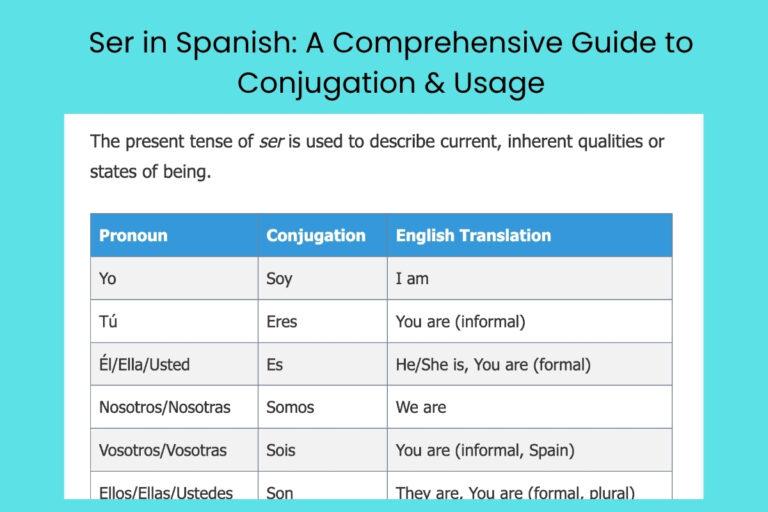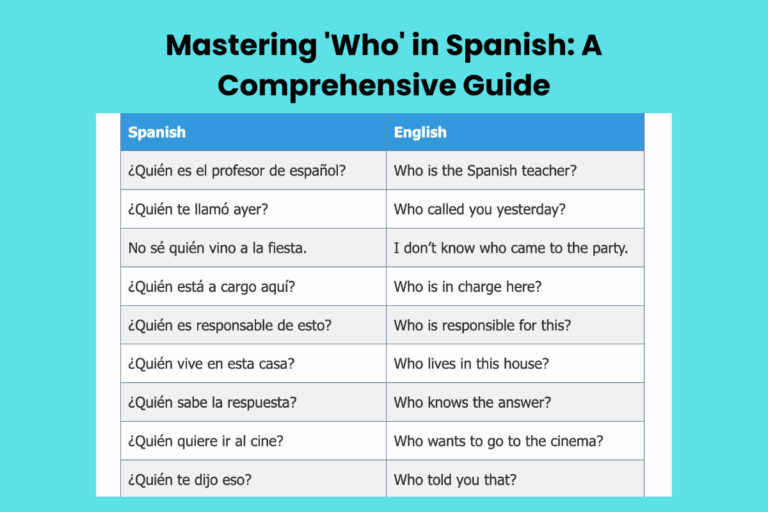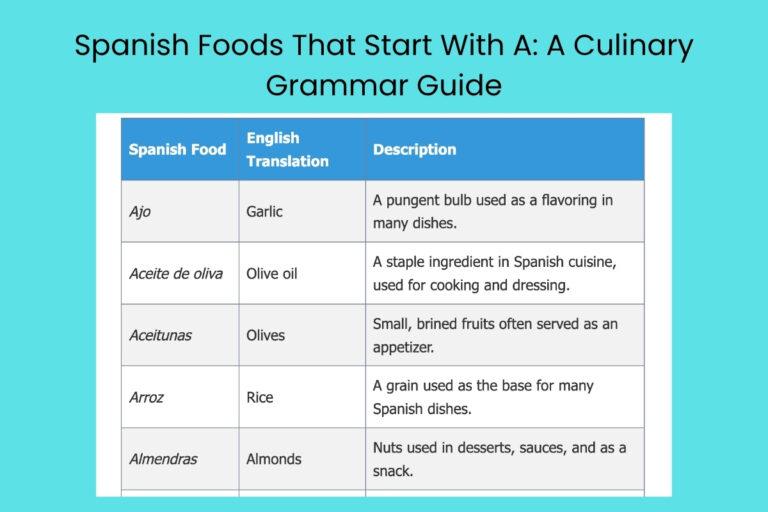Saying “Fourteen” in Spanish: A Comprehensive Guide
Understanding how to express numbers in Spanish is a fundamental skill for any language learner. The number fourteen, specifically, serves as a building block for understanding larger numbers and more complex numerical expressions.
Mastering this simple number opens the door to counting, telling time, making purchases, and engaging in a wide range of everyday conversations. This article provides a comprehensive guide to saying “fourteen” in Spanish, covering its pronunciation, grammatical context, usage rules, common mistakes, and practice exercises.
Whether you’re a beginner starting your Spanish journey or an intermediate learner looking to refine your skills, this guide will equip you with the knowledge and confidence to use this essential number accurately and effectively.
Table of Contents
- Introduction
- Definition of “Catorce”
- Structural Breakdown
- Usage Contexts
- Examples of “Catorce” in Sentences
- Grammar Rules for Using “Catorce”
- Common Mistakes to Avoid
- Practice Exercises
- Advanced Topics
- Frequently Asked Questions
- Conclusion
Definition of “Catorce”
In Spanish, the number fourteen is expressed as “catorce”. It is a cardinal number, indicating quantity. As a cardinal number, catorce is invariable in gender and number; it doesn’t change based on the gender or quantity of the noun it modifies. It is primarily used for counting, indicating age, stating the time, expressing dates, and specifying amounts or quantities of something.
Catorce belongs to the set of numbers from eleven to fifteen, which have unique names in Spanish rather than being directly derived from the single-digit numbers combined with “diez” (ten). This makes memorization a bit more crucial at the beginning of your Spanish learning journey.
Structural Breakdown
The word “catorce” does not have a readily apparent structural breakdown based on simpler numerical components like some other numbers in Spanish (e.g., “dieciséis” is “dieci” + “seis,” meaning “ten” + “six”). Its etymology traces back to Latin, where its ancestor followed a similar independent form.
The key takeaway is that “catorce” must be learned as a single, distinct word representing the number fourteen.
Understanding the pronunciation of “catorce” is crucial. The word is divided into two syllables: ca-tor-ce. The stress falls on the second syllable, “tor.” Mastering the pronunciation involves correctly articulating each sound: the “c” as a “k” sound (as is typical before “a,” “o,” and “u” in Spanish), the “a” as in “father,” the “t” as in English, the “o” as in “or,” the “r” as a trilled or tapped sound (depending on the dialect), and the “ce” with the “c” sound varying by region (either as “th” in Spain or “s” in Latin America).
Usage Contexts
The number “catorce” is useful in many everyday situations. Here are some common scenarios where you would use this number:
- Age: Expressing someone’s age (e.g., “Tengo catorce años” – I am fourteen years old).
- Time: Telling the time (e.g., “Son las dos y catorce” – It’s two fourteen).
- Counting: Counting objects or items (e.g., “Hay catorce libros en la mesa” – There are fourteen books on the table).
- Prices: Stating prices (e.g., “Cuesta catorce euros” – It costs fourteen euros).
- Dates: Expressing dates (e.g., “El catorce de julio” – The fourteenth of July).
- Addresses: Describing addresses (e.g., “Vivo en el número catorce” – I live at number fourteen).
Examples of “Catorce” in Sentences
To solidify your understanding, let’s look at practical examples of how “catorce” is used in Spanish sentences. We’ll categorize these examples by common usage contexts.
Expressing Age
When indicating someone’s age, “catorce” is used with the verb “tener” (to have) and the noun “años” (years).
Here are examples of how to express age with “catorce”:
| Spanish | English |
|---|---|
| Tengo catorce años. | I am fourteen years old. |
| Mi hermana tiene catorce años. | My sister is fourteen years old. |
| Él cumple catorce años mañana. | He turns fourteen tomorrow. |
| Ella aparenta tener catorce años. | She looks like she’s fourteen years old. |
| Cuando tenía catorce años, jugaba al fútbol. | When I was fourteen years old, I played soccer. |
| ¿Cuántos años tienes? – Tengo catorce. | How old are you? – I am fourteen. |
| A los catorce años, decidí aprender español. | At fourteen years old, I decided to learn Spanish. |
| Ella tiene catorce años de experiencia. | She has fourteen years of experience. |
| Sus padres le regalaron un coche a los catorce años. | Her parents gave her a car at fourteen years old. (Note: This is usually not done). |
| El protagonista de la novela tiene catorce años. | The protagonist of the novel is fourteen years old. |
| Mi hijo menor tiene catorce años. | My youngest son is fourteen years old. |
| A partir de los catorce años, puedes trabajar con permiso. | From the age of fourteen, you can work with permission. |
| Ese árbol tiene catorce años. | That tree is fourteen years old. |
| Esa ley tiene catorce años. | That law is fourteen years old. |
| La empresa tiene catorce años. | The company is fourteen years old. |
| Este coche tiene catorce años. | This car is fourteen years old. |
| Esta casa tiene catorce años. | This house is fourteen years old. |
| El edificio tiene catorce años. | The building is fourteen years old. |
| La escuela tiene catorce años. | The school is fourteen years old. |
| El restaurante tiene catorce años. | The restaurant is fourteen years old. |
| El museo tiene catorce años. | The museum is fourteen years old. |
| El puente tiene catorce años. | The bridge is fourteen years old. |
| El parque tiene catorce años. | The park is fourteen years old. |
| El lago tiene catorce años. | The lake is fourteen years old. |
| El volcán tiene catorce años. | The volcano is fourteen years old. |
Telling Time
When telling time, “catorce” represents the minutes past the hour. Note that the Spanish use a 24-hour clock more frequently than English speakers.
Here are some examples of using “catorce” when telling time:
| Spanish | English |
|---|---|
| Son las dos y catorce. | It’s two fourteen. |
| Son las quince y catorce. | It’s fifteen fourteen (3:14 PM). |
| Son las diez y catorce de la mañana. | It’s ten fourteen in the morning. |
| El tren sale a las dieciocho y catorce. | The train leaves at eighteen fourteen (6:14 PM). |
| La reunión empieza a las nueve y catorce. | The meeting starts at nine fourteen. |
| Llegaremos a las veinte y catorce. | We will arrive at twenty fourteen (8:14 PM). |
| Son las cero y catorce. | It’s zero fourteen (12:14 AM). |
| Son las once y catorce de la noche. | It’s eleven fourteen at night. |
| La película empieza a las veintiuna y catorce. | The movie starts at twenty-one fourteen (9:14 PM). |
| El vuelo aterriza a las trece y catorce. | The flight lands at thirteen fourteen (1:14 PM). |
| Nos vemos a las doce y catorce. | We’ll see each other at twelve fourteen. |
| Comenzamos a trabajar a las ocho y catorce. | We start working at eight fourteen. |
| La clase termina a las once y catorce. | The class ends at eleven fourteen. |
| Es la una y catorce de la tarde. | It’s one fourteen in the afternoon. |
| ¿Qué hora es? – Son las seis y catorce. | What time is it? – It’s six fourteen. |
| El concierto empezó a las siete y catorce. | The concert started at seven fourteen. |
| La cena está lista a las nueve y catorce. | Dinner is ready at nine fourteen. |
| Debemos salir a las cuatro y catorce. | We must leave at four fourteen. |
| La cita es a las tres y catorce. | The appointment is at three fourteen. |
| El programa empieza a las cinco y catorce. | The program begins at five fourteen. |
| El juego empieza a las tres y catorce. | The game begins at three fourteen. |
| El partido empieza a las diez y catorce. | The match begins at ten fourteen. |
| La obra empieza a las ocho y catorce. | The play begins at eight fourteen. |
| La exposición empieza a las nueve y catorce. | The exhibition begins at nine fourteen. |
Counting Objects
“Catorce” is used to specify a quantity of items or objects.
Here are examples of using “catorce” to count objects:
| Spanish | English |
|---|---|
| Hay catorce sillas en la habitación. | There are fourteen chairs in the room. |
| Compré catorce manzanas en el mercado. | I bought fourteen apples at the market. |
| Necesito catorce huevos para la receta. | I need fourteen eggs for the recipe. |
| Ella tiene catorce gatos. | She has fourteen cats. |
| En la caja hay catorce libros. | In the box, there are fourteen books. |
| Conté catorce estrellas en el cielo. | I counted fourteen stars in the sky. |
| Catorce personas asistieron a la reunión. | Fourteen people attended the meeting. |
| Tenemos catorce habitaciones en el hotel. | We have fourteen rooms in the hotel. |
| Platé catorce árboles en el jardín. | I planted fourteen trees in the garden. |
| Hay catorce estudiantes en la clase. | There are fourteen students in the class. |
| Vi catorce pájaros en el parque. | I saw fourteen birds in the park. |
| Compré catorce boletos para el concierto. | I bought fourteen tickets for the concert. |
| Hay catorce casas en esta calle. | There are fourteen houses on this street. |
| En la biblioteca hay catorce computadoras. | In the library, there are fourteen computers. |
| Recibí catorce cartas hoy. | I received fourteen letters today. |
| Encontré catorce euros en la calle. | I found fourteen euros on the street. |
| El equipo tiene catorce jugadores. | The team has fourteen players. |
| Hay catorce países en europa. | There are fourteen countries in europe. |
| Preparamos catorce pasteles. | We prepared fourteen cakes. |
| En el estante hay catorce botellas. | On the shelf there are fourteen bottles. |
| El granjero tiene catorce vacas. | The farmer has fourteen cows. |
| La panadería horneó catorce panes. | The bakery baked fourteen loaves of bread. |
| Tenemos catorce modelos diferentes. | We have fourteen different models. |
| El zoo tiene catorce leones. | The zoo has fourteen lions. |
Stating Prices
When stating prices, “catorce” is used with currency denominations, such as euros, dollars, or pesos.
Here are examples of using “catorce” to state prices:
| Spanish | English |
|---|---|
| Cuesta catorce euros. | It costs fourteen euros. |
| Vale catorce dólares. | It’s worth fourteen dollars. |
| El libro cuesta catorce pesos. | The book costs fourteen pesos. |
| Lo compré por catorce libras. | I bought it for fourteen pounds. |
| El precio es de catorce yuanes. | The price is fourteen yuan. |
| La entrada cuesta catorce coronas. | The ticket costs fourteen crowns. |
| Vendí mi bicicleta por catorce euros. | I sold my bicycle for fourteen euros. |
| El alquiler es de catorce dólares al día. | The rent is fourteen dollars a day. |
| Me cobraron catorce pesos por el café. | They charged me fourteen pesos for the coffee. |
| El descuento es de catorce por ciento. | The discount is fourteen percent. |
| Gané catorce dólares por hora. | I earned fourteen dollars per hour. |
| El impuesto es de catorce centavos. | The tax is fourteen cents. |
| El seguro cuesta catorce euros al mes. | The insurance costs fourteen euros per month. |
| El servicio cuesta catorce dolares por semana. | The service costs fourteen dollars per week. |
| El menú cuesta catorce euros. | The menu costs fourteen euros. |
| La camisa cuesta catorce dólares. | The shirt costs fourteen dollars. |
| Los zapatos cuestan catorce euros. | The shoes cost fourteen euros. |
| La falda cuesta catorce pesos. | The skirt costs fourteen pesos. |
| Los pantalones cuestan catorce libras. | The pants cost fourteen pounds. |
| El vestido cuesta catorce yuanes. | The dress costs fourteen yuanes. |
| El abrigo cuesta catorce coronas. | The coat costs fourteen crowns. |
| La chaqueta cuesta catorce euros. | The jacket costs fourteen euros. |
Expressing Dates
“Catorce” can be used when specifying the day of the month, although it’s more common to use ordinal numbers for the first ten days. After that, cardinal numbers are generally used.
Here are examples of using “catorce” in dates:
| Spanish | English |
|---|---|
| El catorce de julio. | The fourteenth of July. |
| Nací el catorce de mayo. | I was born on the fourteenth of May. |
| La reunión es el catorce de junio. | The meeting is on the fourteenth of June. |
| Celebramos el aniversario el catorce de febrero. | We celebrate the anniversary on the fourteenth of February. |
| El examen es el catorce de diciembre. | The exam is on the fourteenth of December. |
| El evento es el catorce de octubre. | The event is on the fourteenth of October. |
| La fiesta es el catorce de agosto. | The party is on the fourteenth of August. |
| El festival es el catorce de abril. | The festival is on the fourteenth of April. |
| El congreso es el catorce de marzo. | The congress is on the fourteenth of March. |
| El taller es el catorce de enero. | The workshop is on the fourteenth of January. |
| El seminario es el catorce de septiembre. | The seminar is on the fourteenth of September. |
| El curso es el catorce de noviembre. | The course is on the fourteenth of November. |
| Se casaron el catorce de agosto. | They got married on the fourteenth of August. |
| Ella se graduó el catorce de mayo. | She graduated on the fourteenth of May. |
| El concierto es el catorce de julio. | The concert is on the fourteenth of July. |
| La obra de teatro es el catorce de abril. | The play is on the fourteenth of April. |
| El partido es el catorce de octubre. | The game is on the fourteenth of October. |
| El evento es el catorce de febrero. | The event is on the fourteenth of February. |
| La cena es el catorce de enero. | The dinner is on the fourteenth of January. |
| La cita es el catorce de marzo. | The appointment is on the fourteenth of March. |
Grammar Rules for Using “Catorce”
As a cardinal number, “catorce” is fairly straightforward in its grammatical usage. However, here are key rules to remember:
- Invariable Gender and Number: “Catorce” does not change based on the gender (masculine or feminine) or number (singular or plural) of the noun it modifies. For example, “catorce libros” (fourteen books) and “catorce mesas” (fourteen tables).
- Agreement with Verbs: When “catorce” is the subject of a sentence, the verb must agree with it in number. However, since “catorce” represents a plural quantity, the verb will usually be in the plural form. Example: “Catorce estudiantes llegaron tarde” (Fourteen students arrived late).
- Use with Prepositions: “Catorce” can be used with various prepositions depending on the context. For example, “por catorce días” (for fourteen days), “a los catorce años” (at fourteen years old).
- Ordinal vs. Cardinal: While “catorce” is a cardinal number, it can sometimes be used in place of an ordinal number (fourteenth), particularly for dates after the tenth of the month.
Common Mistakes to Avoid
Here are some common mistakes learners make when using “catorce” and how to avoid them:
| Incorrect | Correct | Explanation |
|---|---|---|
| Tengo catorces años. | Tengo catorce años. | “Catorce” does not change to plural form. |
| Es la una y catorce de tardes. | Es la una y catorce de la tarde. | Use the correct article “la” with “tarde.” |
| Compré catorce de manzanas. | Compré catorce manzanas. | The preposition “de” is unnecessary when counting. |
| Cuesta catorce euros por cada uno. | Cuesta catorce euros cada uno. | Correct word order. |
| El catorce de julio es mi cumpleaño. | El catorce de julio es mi cumpleaños. | Correct spelling of “cumpleaños.” |
Practice Exercises
Test your understanding of “catorce” with these practice exercises.
Exercise 1: Translate the following sentences into Spanish using “catorce.”
| English | Spanish (Answer) |
|---|---|
| I am fourteen years old. | Tengo catorce años. |
| It’s two fourteen. | Son las dos y catorce. |
| There are fourteen students in the class. | Hay catorce estudiantes en la clase. |
| It costs fourteen euros. | Cuesta catorce euros. |
| The fourteenth of July. | El catorce de julio. |
| She has fourteen cats. | Ella tiene catorce gatos. |
| We need fourteen eggs. | Necesitamos catorce huevos. |
| The rent is fourteen dollars. | El alquiler es de catorce dólares. |
| The company is fourteen years old. | La empresa tiene catorce años. |
| We planted fourteen trees. | Plantamos catorce árboles. |
Exercise 2: Fill in the blanks with the correct Spanish translation of “fourteen.”
| English Sentence | Spanish Sentence (Answer) |
|---|---|
| I have ______ books. | Tengo catorce libros. |
| It is ______ minutes past three. | Son las tres y catorce. |
| He is turning ______ tomorrow. | Él cumple catorce años mañana. |
| The price is ______ dollars. | El precio es de catorce dólares. |
| The meeting is on the ______ of May. | La reunión es el catorce de mayo. |
| There are ______ chairs in the room. | Hay catorce sillas en la habitación. |
| I bought it for ______ euros. | Lo compré por catorce euros. |
| She has ______ years of experience. | Ella tiene catorce años de experiencia. |
| The team has ______ players. | El equipo tiene catorce jugadores. |
| The building is ______ years old. | El edificio tiene catorce años. |
Exercise 3: Correct the following sentences that have mistakes related to the use of “catorce.”
| Incorrect Sentence | Corrected Sentence (Answer) |
|---|---|
| Tengo catorces años de edad. | Tengo catorce años de edad. |
| Son las dos y decimocuatro. | Son las dos y catorce. |
| Hay catorce de personas. | Hay catorce personas. |
| Cuesta catorce euros por uno. | Cuesta catorce euros cada uno. |
| El catorce de julio es mi cumpleaño. | El catorce de julio es mi cumpleaños. |
| Compré catorce manzanas de la tienda. | Compré catorce manzanas en la tienda. |
| Ella es catorce años. | Ella tiene catorce años. |
| El libro cuesta catorce euro. | El libro cuesta catorce euros. |
| Ese coche tiene catorce años de viejos. | Ese coche tiene catorce años. |
| El tiene catorce. | Él tiene catorce años. |
Advanced Topics
For advanced learners, here are some more complex aspects related to “catorce”:
- Figurative Language: While less common, “catorce” can occasionally appear in figurative language or idiomatic expressions. Understanding the context is crucial for interpreting its meaning.
- Regional Variations: While the word “catorce” is standard across Spanish-speaking regions, the pronunciation of the “c” (as “th” in Spain or “s” in Latin America) may vary.
- Historical Context: Exploring the etymology of “catorce” and its evolution from Latin can provide a deeper understanding of the Spanish language.
Frequently Asked Questions
- How do you pronounce “catorce” correctly?
The pronunciation is ca-tor-ce, with the stress on the second syllable (“tor”). The “c” sound varies: in Spain, it’s pronounced like the “th” in “thin” before “e” and “i,” while in Latin America, it’s pronounced like “s.”
- Is “catorce” masculine or feminine?
“Catorce” is neither masculine nor feminine. As a cardinal number, it’s invariable in gender. It doesn’t change based on the noun it modifies.
- Can you use “catorce” as an ordinal number?
While less common, “catorce” can be used in place of the ordinal number “decimocuarto” (fourteenth), especially when referring to dates after the tenth of the month.
- What is the difference between “catorce” and “decimocuarto”?
“Catorce” is the cardinal number (fourteen), while “decimocuarto” is the ordinal number (fourteenth). Use “catorce” for counting and quantities, and “decimocuarto” for indicating position in a sequence.
- How do you say “fourteenth” in Spanish?
The ordinal number for fourteenth is “decimocuarto” (masculine) or “decimocuarta” (feminine). However, for dates, “catorce” is more commonly used.
- Can you use “catorce” with any noun?
Yes, you can use “catorce” with any countable noun to indicate a quantity of fourteen. For example, “catorce casas” (fourteen houses), “catorce personas” (fourteen people).
- What is the plural form of “catorce”?
“Catorce” does not have a plural form. It remains “catorce” regardless of the quantity being referred to.
- Are there any regional variations in the use of “catorce”?
The word itself is universally used, but the pronunciation of the “c” before “e” may vary between Spain (like “th”) and Latin America (like “s”).
- How can I remember the word “catorce”?
Associate it with something familiar. For example, visualize fourteen objects or create a mnemonic device. Repetition and practice are key.
- Is “catorce” used in any common idioms?
While not frequently used in common idioms, its usage can appear in specific cultural contexts or expressions. Always consider the context for accurate interpretation.
Conclusion
Mastering the number “catorce” in Spanish is a crucial step in your language learning journey. This guide has provided a comprehensive overview of its definition, structural breakdown, usage contexts, grammar rules, and common mistakes to avoid.
By understanding these aspects and practicing with the provided exercises, you can confidently and accurately use “catorce” in various everyday situations. Remember that consistent practice and exposure to the language are key to achieving fluency and mastering numerical expressions in Spanish.
Keep practicing, and you’ll soon be counting and expressing yourself with ease!
